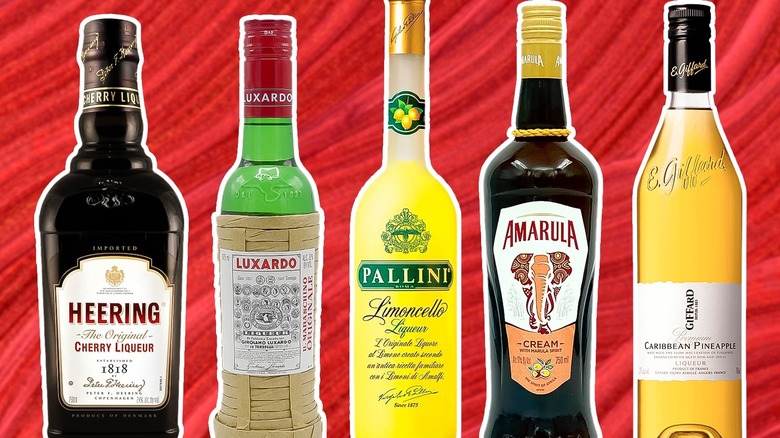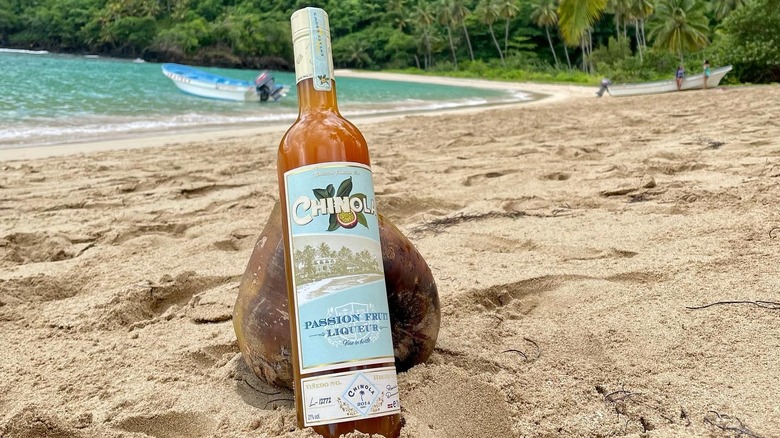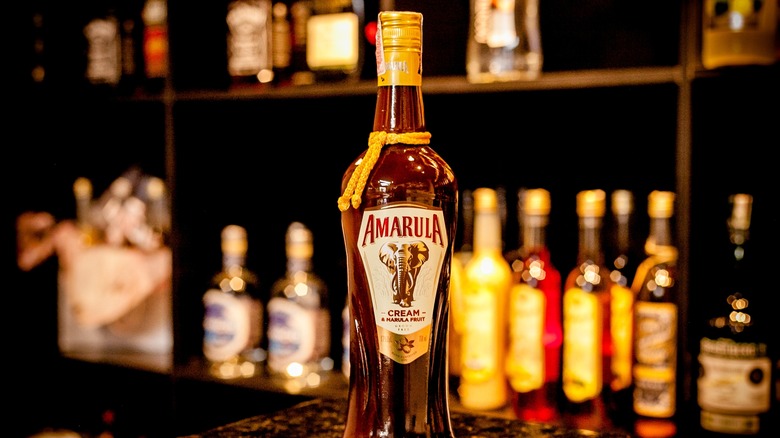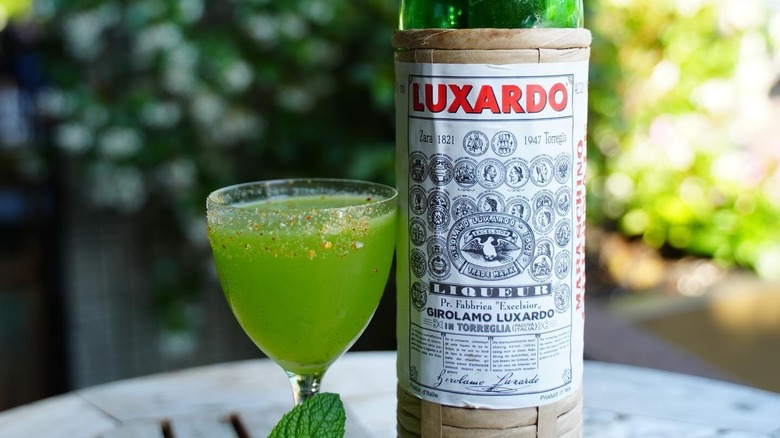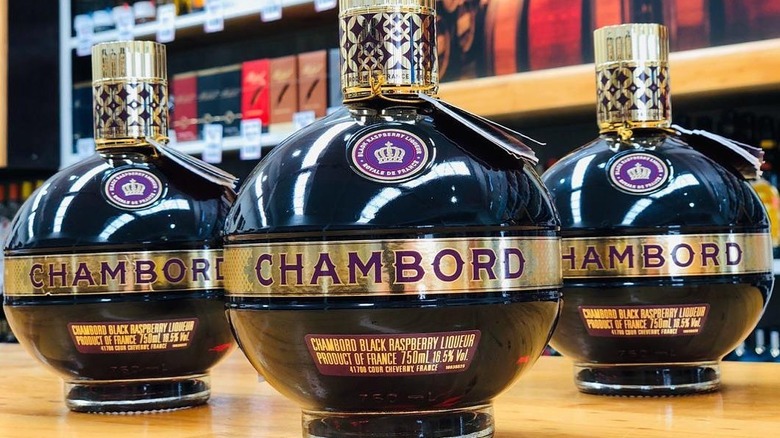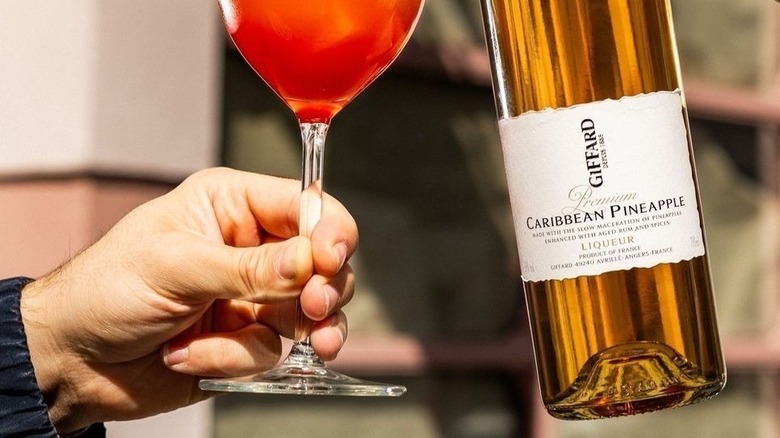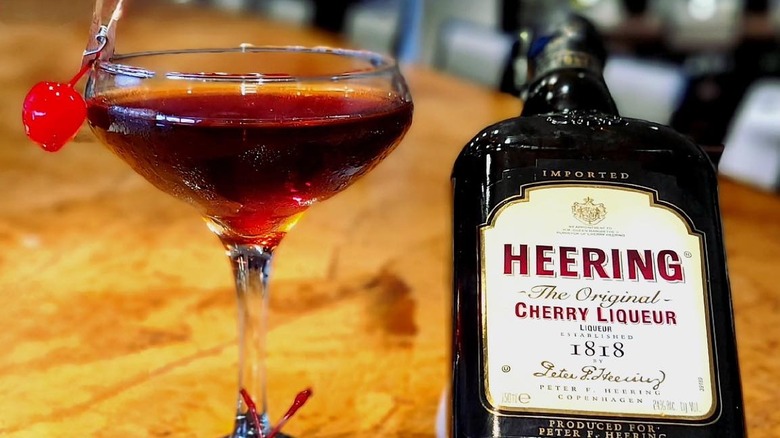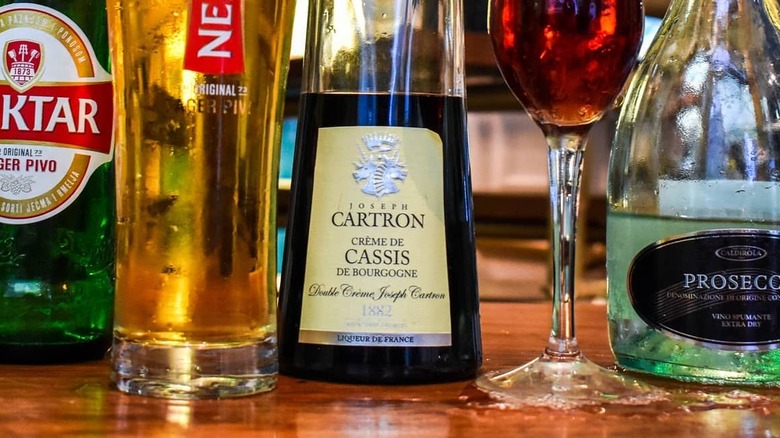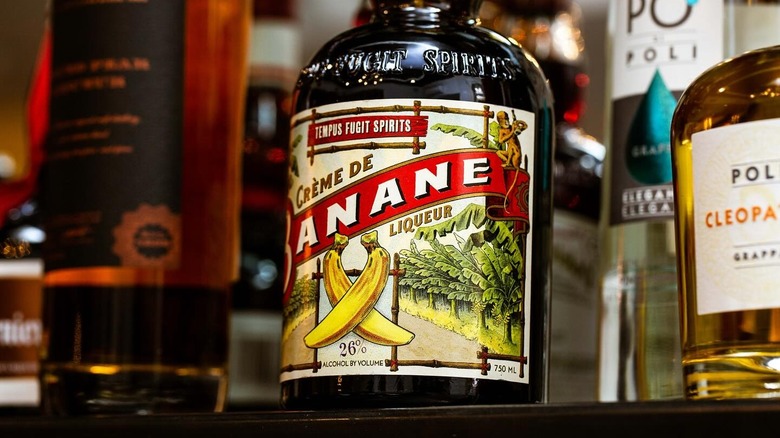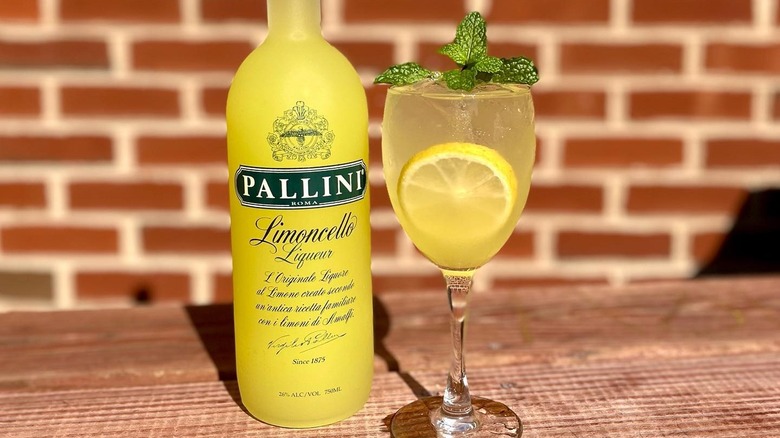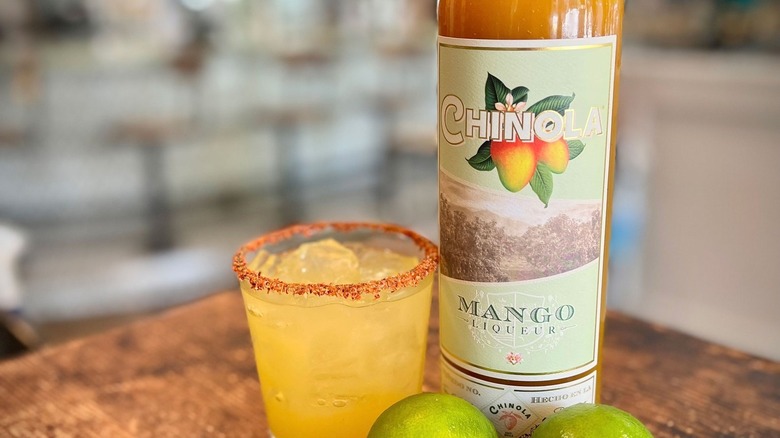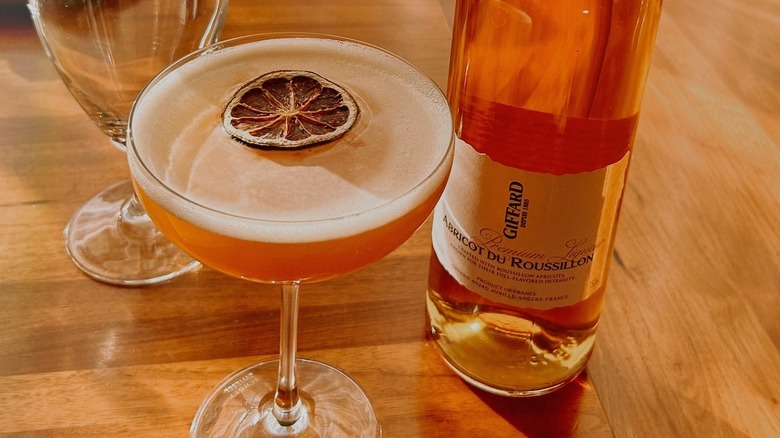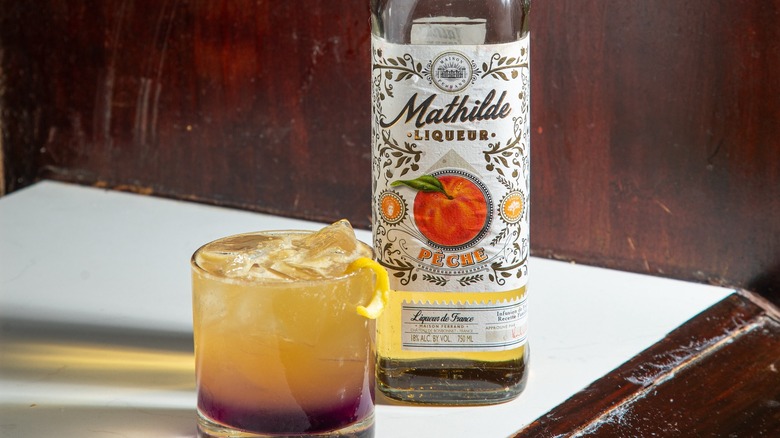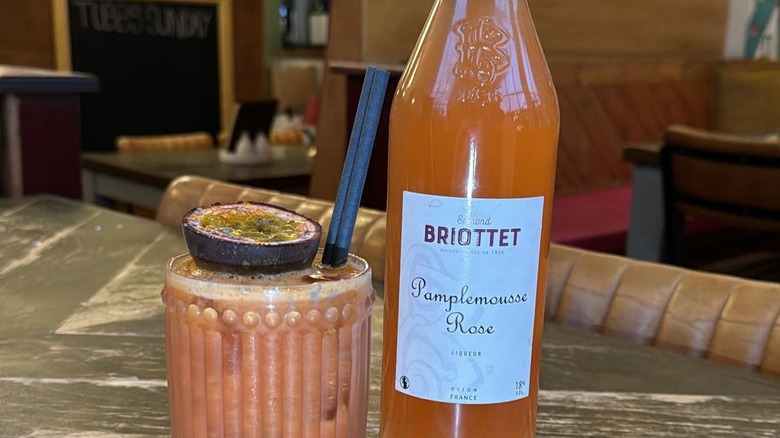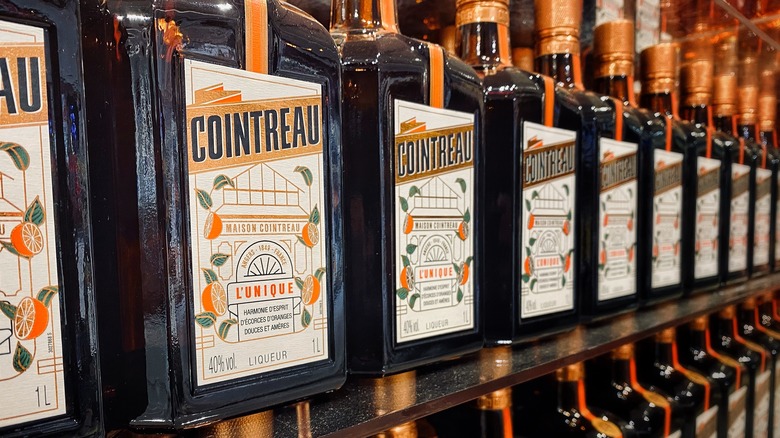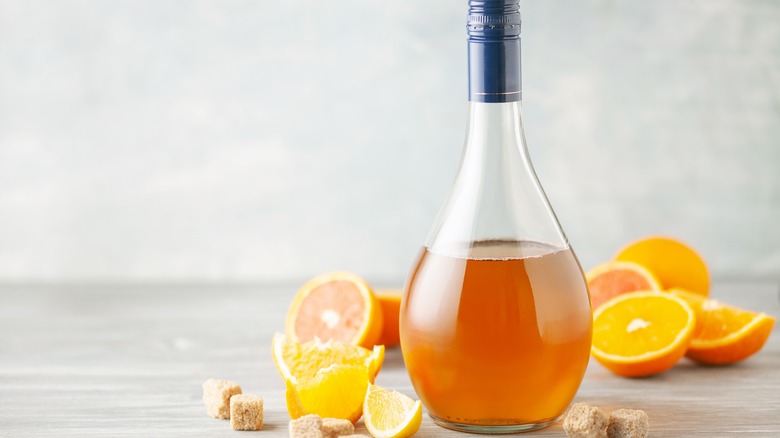15 Best Fruit Liqueurs For Cocktails, Chosen By A Pro Mixologist
Liqueurs are key ingredients in a bartender's toolkit. Don't be confused about the difference between liqueur and liquor — liquors are hard spirits like whiskey, rum, and tequila, while liqueurs can be what elevates a beverage from a mixed drink to a world-class cocktail.
Fruit liqueurs are something that get a bit of a bad rap. In essence, they're just lower-strength spirits infused with fruit, sugar, and often a few other flavoring ingredients. However, as more and more brands have entered the liqueur category, we've seen the rise of products that taste sickly sweet or synthetic. These culprits then find their way into cocktails that purists write off as unbalanced or overcomplicated, with all nuance of flavor thrown out the window.
A long career in the cocktail world has shown me just how wrong this line of thinking is. There are true diamonds in the rough — some new, and some that have been produced for centuries. Below is my handpicked list of the very best fruit liqueurs that I've encountered on my bartending journey.
Chinola Passion Fruit Liqueur
Using passion fruit to zhuzh up a classic cocktail recipe isn't an especially new concept, and the invention of the porn star martini in the early 2000s meant passion fruit liqueurs have become something of a back bar staple. Many bartenders — myself included — typically opted for Passoã, at least until Chinola appeared on the scene in 2014.
There's some expectation that any mass-produced fruit liqueur is going to contain a few artificial flavorings and preservatives. However, the Dominican Republic-based Chinola proved this is not necessary. The company claims to be the first to create a vine-to-bottle fruit liqueur using only fresh passion fruit, cane sugar, and neutral cane spirit, with zero additives. Remarkably, the liqueur is also completely shelf-stable, making it the ideal choice for both professional and home bartenders.
The purity of Chinola Passion Fruit Liqueur is abundantly clear in its flavor. It tastes exactly like fresh — and slightly boozy — passion fruit juice, with the perfect amount of tartness to balance the fruity sweetness, something that's often missing in this style of liqueur. It's an excellent addition to refreshing cocktails like mojitos, margaritas, and daiquiris, but it can just as easily stand alone on the rocks or with a little soda.
Amarula Cream Liqueur
Although Amarula has been around since the '80s, I have to admit that I'd not encountered this unique liqueur until I visited South Africa in 2023. Interestingly, I didn't learn about Amarula in a bar or a liquor store, but on a game drive with a wildlife ranger.
The secret to Amarula is marula, a uniquely delicious sweet-and-sour fruit that is about the size of a plum. When the fruits reach peak ripeness and drop to the ground, they become a delicacy for elephants, impalas, warthogs, baboons, and myriad other creatures native to the African bush. However, Amarula isn't your everyday fruit liqueur. The marula is collected, distilled, and aged in oak barrels — but then the magic happens. After aging the spirit for a couple years, it's then deftly blended with cream, resulting in a liqueur that has more in common with an Irish cream liqueur than anything else.
As such, Amarula can be enjoyed as you would drink Baileys — in coffee, neat over ice, in desserts, or in a creamy cocktail, like a complex espresso martini. The difference, however, is that Amarula has a less chocolatey profile than Irish liqueur, boasting a fruitier flavor with hints of rich caramel.
Luxardo Maraschino Originale
Maraschino liqueur is cherry-based, and it's not often seen outside of cocktail bars. Made from marasca cherries, the fruit is aged with leaves and branches of the cherry trees, which gives the liqueur an almond-like bitterness.
Its bittersweet flavor means maraschino liqueur is seldom consumed neat. Instead, its complex and aromatic profile is used to tie together ingredients in famous drinks like the last word cocktail, the Hemingway daiquiri, and the aviation. Any bar worth its salt will have a bottle of maraschino liqueur on hand, but there are quite a few brands producing it. In my experience, Luxardo is the only one you'll ever need.
For starters, Luxardo has produced maraschino liqueur for over 200 years, and the company remains in the hands of the same family since its inception. Aside from the company's peerless experience, they also stand out because Luxardo's maraschino cherries are special. These Italian-grown marasca cherries are of the highest quality, and only the finest are used to make Luxardo's liqueur.
Chambord
There are plenty of great raspberry liqueurs on the market, and while some of my colleagues in the bartending world might scoff, I'm a sucker for the French classic, Chambord. It may not be the best option if you're after a pure expression of the fruit, but Chambord has a decadent character that makes it an excellent addition to dessert-like cocktails.
Part of Chambord's rich complexity is thanks to the combination of berries used, with blackberries and blackcurrants used to embolden the raspberry flavor. It's also fortified with XO Cognac and seasoned with Madagascan vanilla, Moroccan citrus peel, sweet honey, and aromatic herbs and spices.
The most famous Chambord cocktail is arguably the French martini, but you can also use it as a substitute for crème de cassis in cocktails like a kir royale or a bramble. Chambord is more versatile than you might think — it's great for putting a dark-fruit twist on all manner of drinks, like espresso martinis or margaritas. My favorite use, however, is in a bourbon-based whiskey sour with real egg white, a cocktail that tastes like you're drinking a glass of boozy, melted raspberry ripple ice cream.
Giffard Caribbean Pineapple
Maison Giffard is extremely well-known in the bartending world, and has been plying its craft since 1885. Its vast range of liqueurs is extremely consistent in quality, so while I may have other preferences when it comes to specific styles, you generally can't go wrong with a Giffard. However, a special mention has to go to the company's Caribbean Pineapple liqueur.
There are plenty of pineapple liqueurs on the market, made for punching up tropical cocktails, but they vary widely in terms of taste and quality. Giffard's version falls under its premium category, and it's easy to see why. The producers start by blending sun-ripened Caribbean pineapples with candied pineapples, providing the perfect balance of fresh fruit flavor and natural sweetness. The base spirit is fortified by aged Caribbean rum, which offers depth and a touch of barrel character. Lastly, Giffard infuses the liqueur with spices like cloves and nutmeg, amplifying the notes of toasted pineapple.
The beauty of Giffard Caribbean Pineapple is that while you can use it as a secondary ingredient in tropical cocktails and rum punches, its flavor is authentic enough to twist classic drinks like daiquiris and whiskey sours.
Heering
It's been over two centuries since Heering cherry liqueur was first concocted in Denmark. In that time it's gathered numerous accolades and been designated as a royal purveyor to both the Danish and British monarchies.
Heering is made with real cherries, which give it a rich and jammy flavor — it's sweet without being cloying, and balanced by a natural fruity tartness. It also boasts hints of spice and vanilla, some toasted nut and almond notes, and slightly chocolatey undertones. Heering simultaneously manages to be a versatile cocktail ingredient while remaining unique enough to stand alone. These characteristics are why some classic cocktails, like the blood and sand, call for Heering by name in their recipes.
Heering is generally more approachable than maraschino liqueur, and it works as a great sweetener in a whiskey cocktail like an old fashioned or a Manhattan. That said, it's dry enough that it won't throw cocktails too far out of balance, and it's a great companion for most dark spirits.
Joseph Cartron Double Crème de Cassis de Bourgogne
Crème de cassis is a common liqueur, with its French name translating literally to "cream of blackcurrant." While several companies make a great crème de cassis, the quality can vary dramatically. Joseph Cartron is my go-to bottle.
The Burgundy-based company dates back to 1882, and similarly to Giffard, it's developed an array of consistently delicious liqueurs. Joseph Cartron's range includes everything from fruit liqueurs and kirsch to vermouth and eaux-de-vie, but it's the cassis that sets it apart.
Joseph Cartron actually makes two versions of their cassis, a standard expression and the double expression, and I go for the latter every time. At 19% ABV, it's the more potent of the two, and the texture is decadently silky. The stewed fruit flavors are more mature and concentrated, so it truly elevates any cocktail that it's in. The drink I usually make with this liqueur is the kir royale — the perfect party cocktail that combines crème de cassis and wine — but it plays well with many spirits, making it great for experimentation.
Tempus Fugit Crème de Banane Liqueur
When done right, banana liqueurs are a godsend for tiki cocktails, and can even work in unexpected drinks like a Sazerac and an old fashioned. Many modern takes on the liqueur fall short of the mark, but Tempus Fugit provides classic quality.
Tempus Fugit's aim is to recreate cocktail modifiers — ingredients that transform drinks through their interaction with the base spirit — that date back to pre-Prohibition times. Relying on authentic recipes and techniques, the company's range has expanded into a fine selection of rarified liqueurs, aperitifs, bitters, and vermouths. Tempus Fugit's Crème de Banane is arguably the most impressive of the brand's resurrected tipples, bursting with a rich banana-bread profile.
Simply put, this liqueur tastes more like bananas and less like candy than what's produced by the competition. It's sweet but not overly so, with a rich baking-spice profile that lends itself to all manner of spirits. Specifically, Crème de Banane is a match made in heaven for rum, especially top-ranked Jamaican rum brands that feature funky banana notes.
Pallini Limoncello
A historic product of Italy, limoncello is one of the nation's favorite liqueurs, right up there with Campari. There are few aperitifs as refreshing on a hot day as ice-cold limoncello — however, the sheer number of limoncello brands on offer can make it hard to narrow down the best.
The specifics of limoncello's history are a little hard to pinpoint. Some believe the liqueur was popularized in the Middle Ages, while others claim it was first created in Sicily only about a century ago. On paper, limoncello is surprisingly straightforward, involving steeping lemon peels in a neutral spirit like vodka, and adding sugar. So, with a recipe basic enough that limoncello can be made at home, why is there so much diversity in terms of quality?
Some of Pallini's success can be attributed to liqueur-making experience that dates back to the 19th century, but the real secret is in the lemons. Pallini exclusively uses fresh, handpicked sfusato fruit — lemons unique to Italy's Amalfi Coast. These lemons have naturally low acidity and high sweetness, meaning there's no need for additives that might make the liqueur taste synthetic or overly saccharine. This makes Pallini Limoncello perfect for introducing bold lemon flavor to drinks without the tartness of lemon juice.
Chinola Mango Liqueur
Mango liqueurs have always felt like a bit of a necessary evil to me. Despite mangoes being my favorite fruit, I've generally found the liqueurs either insipid or overwhelmingly sweet. Fortunately, mangoes just got the Chinola treatment, in what has been the company's first new product launch since releasing their passion fruit liqueur.
After getting my hands on a bottle, I'm elated to say that the magic touch is still there. Once again, Chinola uses only fresh fruit with neutral cane spirit to make its mango liqueur, and the authenticity is palpable. This delicious liqueur manages to portray the floral nuances of mango while still displaying the fruit's characteristic sweetness.
What's particularly clever, though, is the addition of passion fruit in the blend. If you didn't know it was in there, you might not have guessed it from the bold mango flavor. However, the passion fruit does add a little tartness and dryness to the liqueur, which goes a long way toward making it a more versatile beverage. As such, it works just as well over ice as it does in cocktails.
Giffard Abricot du Roussillon
It would be difficult to get through this list without mentioning at least one more liqueur from Maison Giffard. If you haven't already guessed, Abricot du Roussillon is an apricot brandy, and another product that sits in Giffard's premium liqueur range.
Again, the true beauty of this liqueur comes down to the specific fruit. Roussillon apricots are famed for their intensely sweet and aromatic flavors. It's an apricot that's perfectly matched for sweet treats like pastries and jams; however, its popularity dwindled in the middle of the 20th century. Fortunately, Giffard is resurrecting the traditional fruit and showcasing its qualities beautifully in this liqueur.
Giffard Abricot du Roussillon displays a balanced combo of both dried and stewed apricot flavors, without the fruit tasting overcooked. It's my go-to bottle for any cocktail that calls for apricot brandy, but this works surprisingly well in tiki drinks and whiskey cocktails, too.
Maison Ferrand Mathilde Pêche Liqueur
At first glance, you'd be forgiven for assuming Maison Ferrand was older than it is — both the branding and the quality of its spirits exude experience and class. The truth is that the company didn't actually launch until 1989, but Maison Ferrand has made up for lost time.
After making a splash in the cognac category and revitalizing the world of French gin, Maison Ferrand turned its sights on making world-class liqueurs. Peach liqueur has long been a staple in tiki drinks and punches, and is commonly used the Bellini cocktail, a close cousin of the mimosa. By choosing whole French vine peaches for its Mathilde Pêche, Ferrand has created a liqueur that supersedes the competition. It's elegant, yet powerfully rich with a floral complexity and hints of soft white grape and vanilla.
Although this liqueur is likely still a little too syrupy-sweet to drink on its own, a splash of soda really opens it up. Try adding this liqueur to a quality witbier for an incredibly refreshing summer sipper.
Briottet Pamplemousse Rose Liqueur
I tend to rank Briottet alongside Giffard when it comes to liqueurs. Almost any cocktail bar will have at least one liqueur from the historic Maison Briottet somewhere on the shelves, thanks to the brand's remarkably reliable quality and astounding range of products.
While you can sometimes do better than a bottle from Briottet, you certainly can't go wrong with it. However, the Pamplemousse Rose — meaning pink grapefruit in French — is a liqueur that I've failed to find a greater replacement for. Grapefruit is one of those flavors that I can love or hate, depending on how well-balanced the sweet and bitter notes are — and Briottet gets it spot on.
I tend to swap in the Pamplemousse Rose instead of non-alcoholic grapefruit juice in cocktails like a classic Mexican Paloma, as it's richer and fattens up the mouthfeel. It pairs excellently with white spirits like gin and tequila. It's also effective for making margaritas and mojitos more interesting, and it works very well combined with a dry white or sparkling wine.
Cointreau
Orange liqueurs are a slightly confusing category, as you'll find them being called different names in cocktail recipes. Curaçao was the earliest moniker of the style, but this name was eventually succeeded by "triple sec," a term credited to Cointreau.
Nowadays, triple sec is generally used as the catch-all term for orange liqueurs and, ironically, Cointreau itself is assumed to be in a category of its own. I can't count the number of times someone's asked me to make a margarita with Cointreau instead of triple sec, even though they're technically the same thing. However, this is a testament to the quality of Cointreau, and its ability to differentiate itself from the competition.
Part of this is thanks to its no-nonsense profile. The creamy orange character takes center stage, with a notable dryness that stops it from making drinks too cloying. It also eschews many of the added spices and herbs found in other brands, so it makes for a cleaner tasting drink. I've always kept an eye out for a more unique orange liqueur than Cointreau, but I'm still searching.
Your own liqueur recipe
Although there's no shortage of fancy liqueurs out there, the truth is that they're essentially very simple concoctions. Simple enough that it takes very little effort to experiment with making your own at home.
At heart, a fruit liqueur is effectively an infusion. You start with a spirit base; this is typically something neutral like vodka, but brandy or rum can work equally well. Then you add your fruit. Some liqueurs just use the peel of the fruit — especially those that use citrus, as the fragrant oils of those fruits lie within the skin. Some recipes call for the macerated flesh of the fruit, while some use both the skin and flesh, and others may even call for the pits and parts of the parent plant. Generally, you'll want to add some sugar to increase the sweetness, and possibly some herbs and spices for extra flavor. You can also dilute the spirit with water to bring it down to a liqueur level of strength.
There are countless liqueur formulas online — like a classic limoncello recipe — and I use these as inspiration for my own concoctions. My top tip is to invest in some small Mason jars and use each one as a test case for your recipe. Instead of potentially wasting a large quantity of liquor, you can tweak the ingredients and infusion times for each sample, then scale up when you've settled on your perfect recipe.
